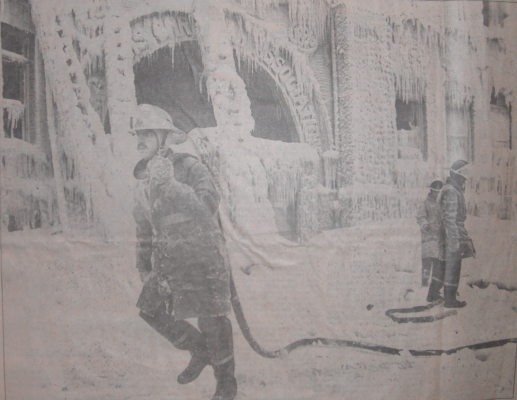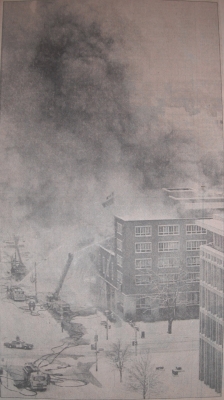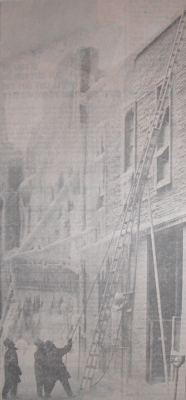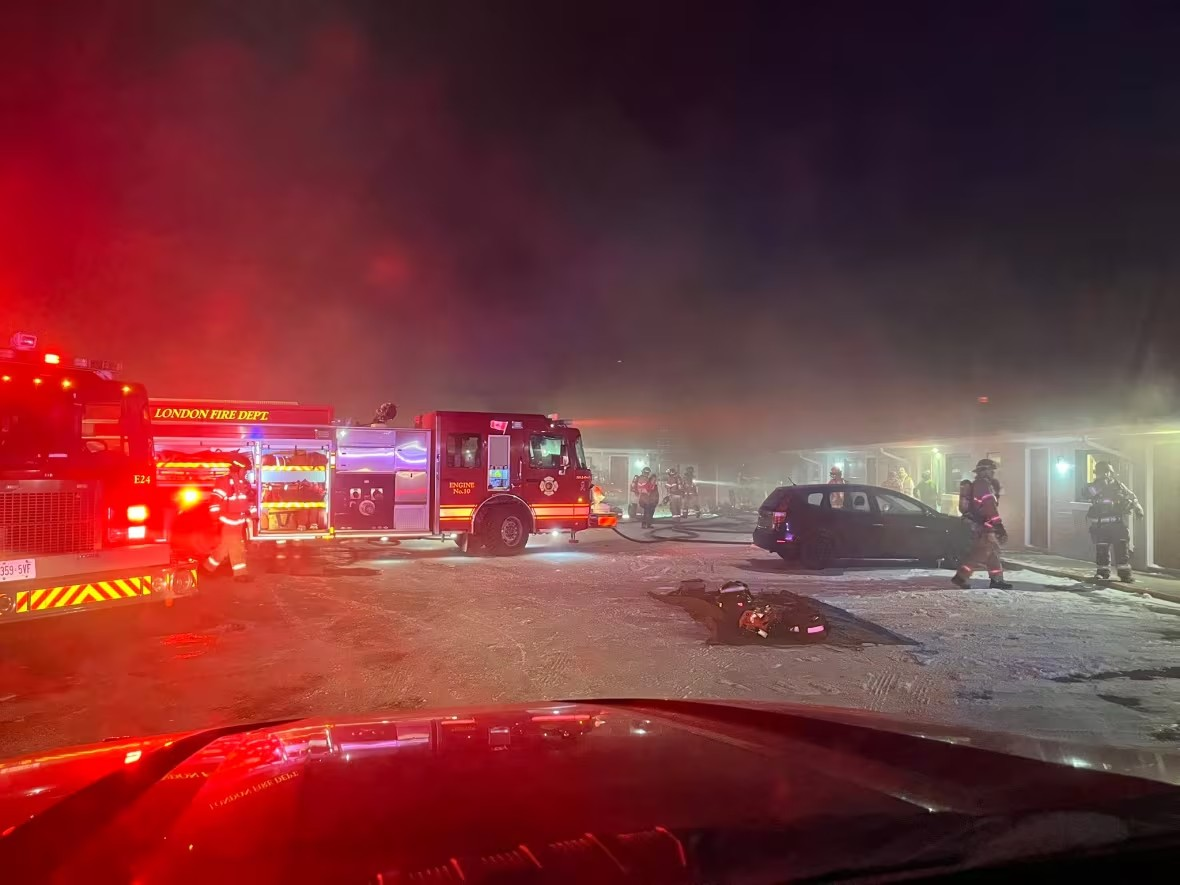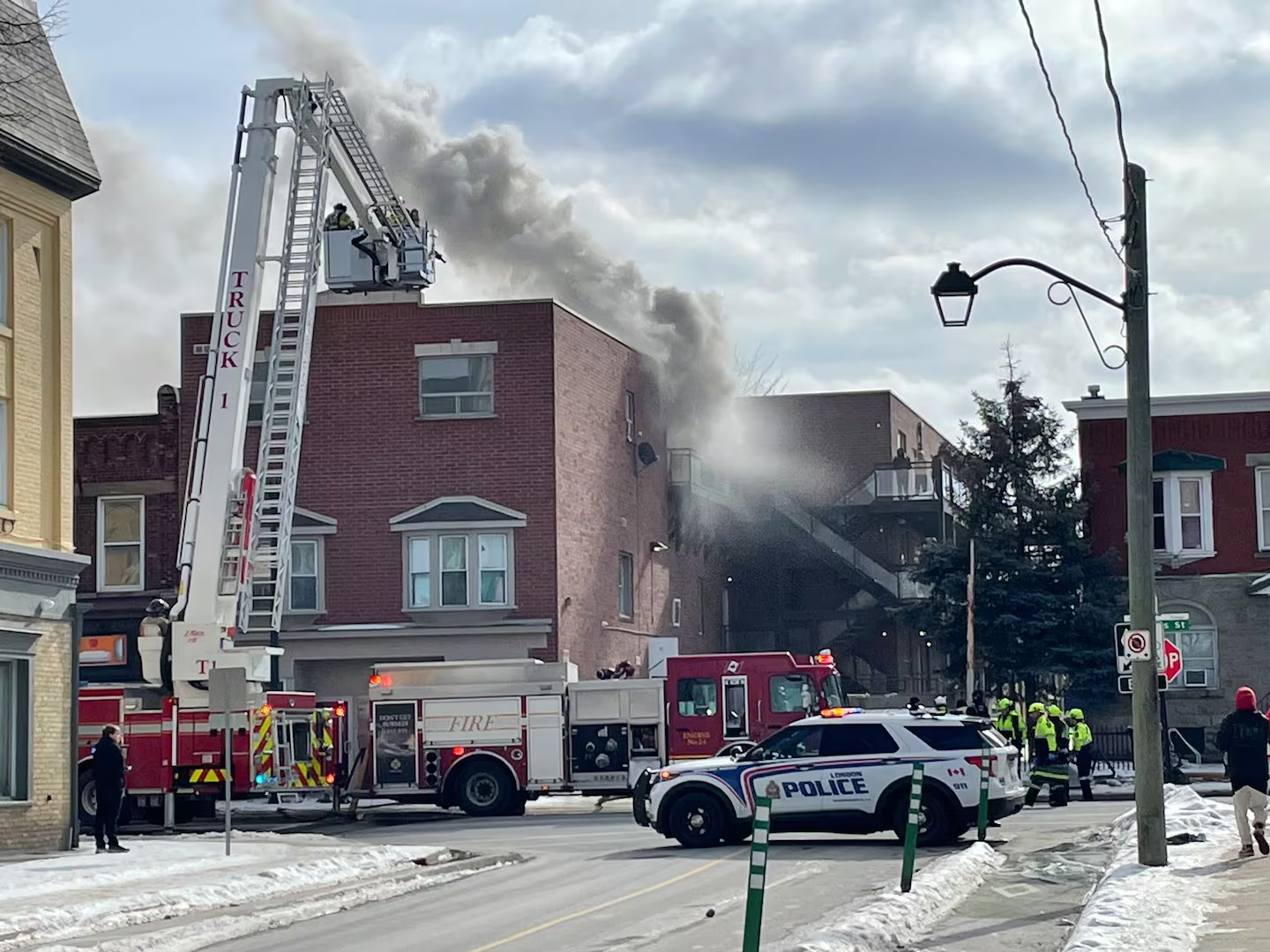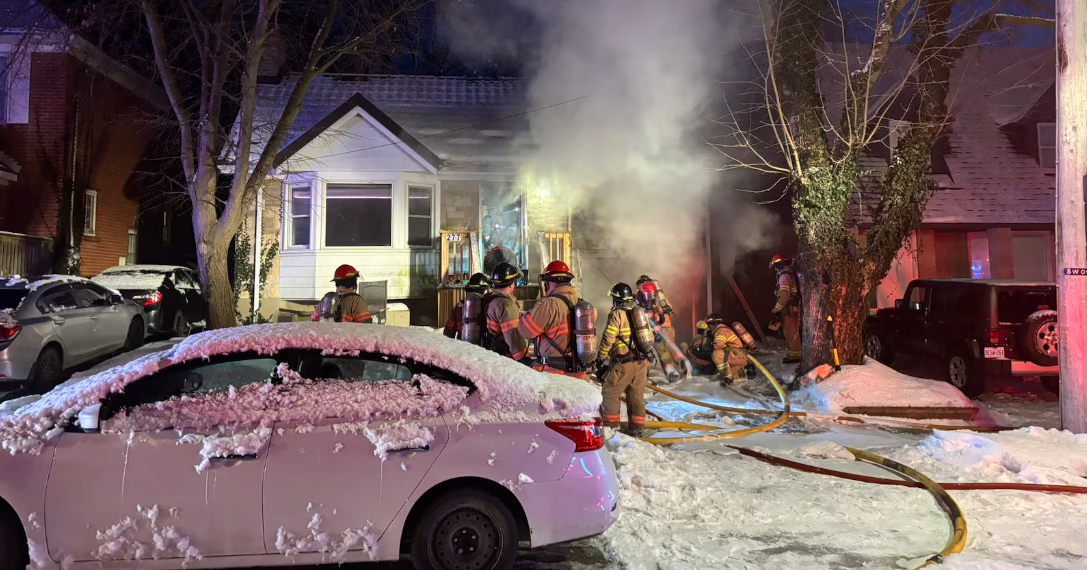By Mary Kehoe, Cheryl Hamilton, John Hamilton and Don Murray of the Free Press
Fire investigators hope to get into the ice-sheathed ruins of the downtown London YM-YWCA today to search for the cause of the spectacular fire that did an estimated $1 million in damage and forced 72 residents and staff to flee into sub zero weather early Sunday.
No one was seriously injured in the blaze, which broke out about 4 a.m., and despite the efforts of 50 firefighters, five pumpers and four aerial trucks, virtually destroyed the 84-year-old original portion of the Y centre in a matter of hours.
Daylight found roadblocks ringing the area and the Victorian façade of the building encased in the frozen tons of water poured on the building, glistening like a ghostly ice palace.
Fire officials said Sunday they expected to continue dousing the smouldering wreckage overnight and Robert Kaufman of the Ontario Fire Marshal’s Office in London said he didn’t expect to get into the Wellington Street building until today.
For the residents, all of whom were in the adjacent five-storey residential wing of the Y that was untouched by the flames, the drama began when they were roused from their beds by buzzing fire alarms.
A few threw on clothing but many were clad only in nightclothes as they hustled out into minus 22-degree weather only moments before flames engulfed the old section of the centre. Fire officials said a firewall protected the residential wing from the flames but smoke and water damage will likely be extensive.
The dazed residents took shelter in the lobby of the London Life building across the street and were later taken to the City Centre Holiday Inn where they spent Sunday night.
Fire officials, who said the first trucks arrived at 4:12 a.m., said it appeared the blaze broke out in a first-floor lounge.
Flames shot high into the sky after breaking through the roof of the three-storey structure about 5 a.m., less than an hour after the fire alarm sounded.
By 8 a.m., most of the building was rubble and just about the only thing still standing was the wall fronting Wellington Street.
Fire department Platoon Chief Ernie Fleetwood said because of the “balloon type” structure of the building, it became a “large fireball” very quickly.
He said firefighters were hampered because of the inside design of the building and by the frigid temperatures.
“There were parts of the building we couldn’t get at all and other parts we couldn’t send men inside because of the danger the placed would collapse.”
Hydrants froze shut and “hoses and water froze solid once the water was shut off for a time. Some of the trucks even got stuck in the frozen water,” he said.
Temperatures kept dropping to a flesh-freezing minus 27 by about 7 a.m., shattering the old record of minus 21 set in 1918. Smoke that… (second half of this article is missing)
- Record low temperatures turned the ruins of London’s downtown YM-YWCA into an ice palace Sunday, as firefighters like Roger Chiasson, left, struggled to keep their hoses free of the encroaching ice forming on the street. Water poured on the blaze coated exterior of the building as temperatures hit almost -27. (By Ed Heal of The London Free Press)
- A combination of steam and smoke billowed into London’s skies Sunday, dwarfing firefighters and their equipment in the battle in sub-zero conditions to prevent the blaze in the oldest part of the downtown YM-YWCA complex from spreading to the newer wing.
- Even ladders became icebound and had to be tugged free from the drenched and frozen building. (London Free Press)

